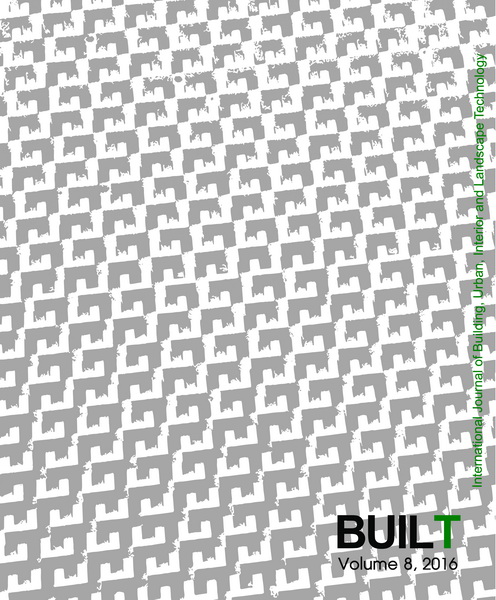Prediction Model for Average Daily Rate (ADR) of Bangkok Hotel
Keywords:
Average Daily Rate (ADR), Bangkok hotel, Hedonic price model, Multiple regression analysisAbstract
The main objective of this research was to propose an Average Daily Rate (ADR) prediction model for three to five star hotels in Bangkok using the Hedonic Price Model. The variables included in the model were derived from a literature review and suggested by an expert panel. Factor analysis was adopted to merge highly correlated variables. The data from 461 hotels in Bangkok were acquired from www.agoda.com. The results showed that 11 variables affecting the ADR and the five variables that had the highest regression coefficients were 1) star rating, 2) score of location overview, 3) score of room comfort, 4) score of staff performance and 5) fitness center availability (presence or absence). The log-linear model was selected as it showed the highest Adjusted R2 (Adjusted R2 = 0.843). The observed ADRs and the predicted ADRs from the proposed model were not significantly different, as shown by the pair sample t-test’s value of 0.153 at the 0.05 significant level and 0.472 Theil’s U statistical value. This suggests that the proposed model can be used to provide useful information for Bangkok hotel investors or developers regarding hotel value appraisal, or the pricing of hotel room rates.
Downloads
References
Central Plaza Hotel Public Company Limited [Central]. (2015).Annual registration statement at 31st December 2014. Retrieved May 4, 2015, from http://www.set.or.th.
Corgel, J. & deRoos, J. A. (1993). The ADR rule-of-thumb as predictor of lodging property values. International Journal of Hospitality Management, 12(4), 353-65.
DusitThani Public Company Limited [DTC]. (2014). Annual registration statement at 31st December 2014. Retrieved May 4, 2015, from http://www.set.or.th
Grand Asset Hotels and Property Public Company Limited [GRAND]. (2015). Annual registration statement at 31stDecember 2014. Retrieved May 4, 2015, from http://www.set.or.th.
Hartman, R. S. (1989). Hedonic methods for evaluating product design and pricing strategies. Journal of Economics and Business, 41(3), 197-212.
Royal Orchid Hotel (Thailand) Public Company Limited [ROH]. (2015). Annual registration statement at 31st December 2014. Retrieved May 4, 2015, from http://www.set.or.th
Shanggri-La Hotel Public Company Limited [SHANG]. (2015). Annual registration statement at 31st December 2014. Retrieved May 4, 2015, from http://www.set.or.th.References
Abrate, G., Capriello, A. & Fraquelli, G. (2011). When quality signals talk: Evidence from the turn hotel industry. Tourism Management, 32, 912-921.
Alexa.com. (2014). Website ranking. Retrieved February 3, 2014, from http://www.alexa.com.
Andersson, D. E. (2010). Hotel attributes and hedonic prices: an analysis of internet-based transactions in Singapore’s market for hotel rooms. Ann RegSci, 44, 229-240.
Bartlett, J., Kotrlik, J. & Higgins, C. (2001). Organization research: Determining appropriate sample size in survey research. Information Technology, Learning, and Performance Journal, 19, 43-50.
Chen, C. & Rothschild, R. (2010). An application of hedonic pricing analysis to the case of hotel room in Taipei. Tourism Economics, 16, 1-10.
Halvorsen, R. & Pollakowski, H. O. (1981). Choice of functional form for hedonic price equations. Journal of Urban Economics, 10, 37-49.
Iamtrakul, P. Satichob, P. & Hokao, K. (2013). Comparing the efficiency of urban components in proximity to transit service area. International Journal of Building, Urban, Interior and Landscape Technology, 2, 21-34.
Israeli, A. (2002). Star rating and corporate affiliation: Their influence on room price and performance of hotel in Israel. Hospitality Management, 21, 405-424.
Makridakis, S., Wheelwright, S. & McGee, V. (1983). Forecasting: Methods and applications. USA: John Wiley & Sons.
Ministry of Tourism and Sports. (2007). Thailand tourism standard, hotel standard. Bangkok: Author.
National Statistical Office. (2012). The 2012 hotels and guest houses survey/receipts of hotels and guest houses in 2011 by size of establishment and region. Bangkok: Author.
Panichwong, W. (2002). Regression analysis. Bangkok: King Mongkut’s University of Technology North Bangkok.
Prasith-rathsint, S. & Sukkasem, K. (1993). Regression analysis: Concept method and application. Bangkok: Liang Chiang Publication.
Raleigh, L. & Roginsky, R. (1999). Hotel investments issue & perspectives. USA: Education Institute of the American Hotel & Motel Association.
Rosen, S. (1974). Hedonic prices and implicit markets: Product differentiation in pure competition. Journal of Political Economy 82(1), 34-55.
Roubi, S. & Littlejohn, D. (2004). What makes hotel values in the UK? A hedonic valuation model. International Journal of Contemporary Hospitality Management, 16(3), 175–181.
Tripadvisor.com. (2015). Top 10 destinations – Thailand. Retrieved June 12, 2015, from http://www.tripadvisor.com.
Thai Hotel Association. (2012). Name list for hotels &resorts 2012. Retrieved October 11, 2013, from http://www.thaihotel.org.
Wanitbancha, K. (2003). Advance statistic analysis with SPSS for windows. Bangkok: Thamasarn.
White, P. J. & Mulligan, G. F. (2002). Hedonic estimates of lodging rates in the four corners region. The Professional Geographer, 54(4), 533-543.
Yamane, T. (1973). Statistics, an introductory analysis (3rd Ed.). USA: Harper and Row.
Zhang, Z., Ye, Q. & Law, R. (2011). Determinants of hotel room price an exploration of travelers’ hierarchy of accommodation needs. International Journal of Contemporary Hospitality Management, 23(7), 972-981
Downloads
Published
How to Cite
Issue
Section
License

This work is licensed under a Creative Commons Attribution-NonCommercial-NoDerivatives 4.0 International License.












